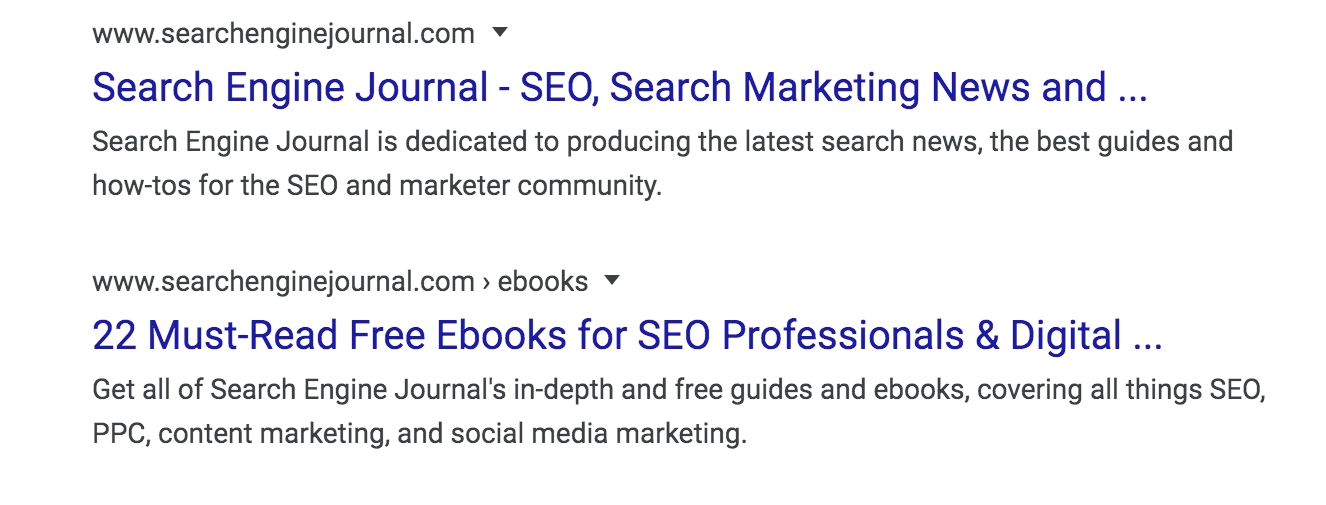Back in 2007, freelancer writers like myself were paid crap per piece of website content.
Due to the youthful tastes of search engines and digital content, algorithms were much simpler to conquer.
The goal was the more content, the better.
More content equals better rankings.
Better rankings equal stronger profit.
“The more content, the better” remains a significant saying across websites today.
Back then, the game plan was to pump out as much as possible, which typically resulted in zero quality.
For me, that meant $5 for rewritten press releases on motorcycle websites.
And $10 for 250-word summaries of anything newsworthy in the pet supply industry.
(Remember those 2007 pet food recalls? The updates were weekly, though a few companies wrote about them every few hours just to produce content.)
Thankfully during these times, I was freelancing for magazines that paid serious money – sometimes $1.50 a word.
Before I knew anything about the Pareto Principle, I was a student of 80/20 living.
I spent most of my time writing – and chasing – magazine writing. Those editors pushed me always to produce the best possible work.
This led to my position today, 13 years later, creating magazine-quality content for the digital world.
Quality continues to be everything, though now the game is much more challenging.
You must create engaging content that reads as if it was written for some of the world’s most popular magazines and also rank highly in search engines.
I wrote plenty about writing for SEO here: SEO Writing: Top 47 Tips to Master a Combined Art.
For this piece, I will provide guidelines and tips about how you can improve your writing today (sans the SEO talk).
The following are 15 lessons I’ve learned throughout the years.
I speak from my experience as a writer in various disciplines; from newspapers to ecommerce product copywriting to blogging to magazine articles to ghostwriting for CEOs.
All of that writing also led to a position as online editor for Ultimate Motorcycling, the launch of my SEO-driven content marketing agency, and the publication of my debut book “365 to Vision: Modern Writer’s Guide (How to Produce More Quality Writing in Less Time.”
Let’s get to it.
1. Distraction-Free All The Time
There’s a saying in the motorcycle industry – ATGATT, which means All the Gear, All the Time.
You never know when a crash will occur – but you must always be prepared.
Well, for writers, the saying should be DFATT – Distraction-Free, All the Time.
Just like you can crash a motorcycle and mess yourself up seriously if not riding with the proper gear, you can create sloppy and unengaging content if not distraction-free every moment you’re writing.
All strong writing begins before the actual act of typing or writing a word.
This means killing anything that will distract you from your thoughts – thoughts that you want clear and concise versus cluttered and disorganized.
The way forward? Pure silence from things that distract.
The biggest culprits are:
- Notifications from social media – text, chats, or email.
- Your phone itself (even visually seeing it!).
- A cluttered environment.
- Cluttered thoughts.
- People.
The notifications part is easy – make sure all are off when writing.
This means zilch, none, nada.
Keep your phone away, whether across the room or hidden in a drawer.
If I’m writing something that takes a massive amount of deep thought, I also shut the internet off on my Mac or Macbook.
As for cluttered environments and thoughts – keep your desk tidy, and declutter your mind by doing something relaxing before writing.
Whether it’s meditation, a walk outdoors, a stupidly fast motorcycle ride…do whatever works for you.
As for people, let your co-workers or family members know (working home is the new norm, correct!) when you’ve blocked times out for writing.
It seems everyone wants an espresso break or opinion on something when you’re focused on your thoughts and discovering how to say them through words.

2. Discover Your Peak Creative Hours
Discovering your peak creative hours begins with understanding your circadian rhythms.
Everyone is different.
The good thing is you can alter these by changing sleep patterns – and using light therapy to aid in changing your rhythms.
Until my late 20s, my most creative periods were from 7 p.m. until the wee hours of the morning.
This was a huge problem due to my then 9-to-5 position as head of content at an ecommerce company.
I struggled with creativity during those standard hours, which resulted in sloppy copywriting.
My only solution was to bring the work home and complete it during the evening.
Again, this was when I wasn’t married or had a kid, so my nights were structured differently.
The process also equated to much wasted time at the office during those 9-to-5 working hours, a situation that drove me nuts.
Thankfully, it prompted me to head into freelancing full-time.
Though I did have another short stay at a local digital marketing agency where the same thing happened.
My agency’s business model today relies on only freelance writers – I can care less when they finish their writing assignments as long as they are super quality and delivered on time.
The 9-to-5 mindset is not practical for most creative positions.
Find your creative hours, and work within them.
This will help you produce more quality writing in less time.
And don’t worry if those hours are not practical – you can always change your lifestyle to change your peak creativity time.
I did this, and now feel most creative in the early mornings or mid-afternoons.
It’s all about establishing a healthy routine and sticking with it.
This routine also is greatly influenced by sleeping patterns, which influence your circadian rhythm.
Light therapy also helps.
Discover and train yourself with your own routine, and much more positive work will flow.
3. Maintain Focus
“Good things happen when you narrow your focus,” says Al Ries, the author of a must-read for any business owner, “Focus: The Future of Your Company Depends on It.”
Though Ries talks about businesses that maintain a focus to achieve larger profits, the advice directly translates to writers.
When your piece of content, whether a blog, service page, magazine article, book, whatever, maintains a focus, your writing won’t confuse.
Confusion is the ultimate enemy within any piece of writing.
Once readers become the slightest bit confused, they flee – and quickly.
This is especially true for the blogging world where the reader expects the article to talk only about what’s included in the title.
For example, if I went on a rant about affiliate marketing within this article intended for those seeking to improve their writing, I’d expect a horrible bounce rate.
And don’t forget writing emails – they need as much focus – or more! – than any type of writing.
If your subject line talks about a content strategy, don’t mention your social media strategy thoughts or Friday’s party plans in the email body.
Start another thread and dedicate that email to that subject.
The less confusion, the better the writing.
4. Outline First
Outlines simplify the writing process because they organize things.
I’m not one for analogies, but you can think of an outline like a GPS map laid out with step-by-step directions.
The map is there – you start at point A and get to point whatever by following the directions – what turns, roads, etc.
There are typically a few different routes from quickest to least quick.
And if you turn somewhere not directed, the GPS will replan your path to get you to the destination.
An outline for any piece of writing works the same – you map out an article from intro to the conclusion.
The thoughts (subtopics) between get you to the destination of what the reader will genuinely discover by reading your work.
I’ve used outlines for every writing type, from blogs to books to service pages to emails.
Most of these are handwritten in my “spew” tablets, which are those inexpensive Moleskine Cahier ones I carry everywhere with me.

I used those for outlines and, sometimes, as I did for this piece, first drafts.
Handwritten slows everything down, allowing you to think between the spaces of words.
This tiny change has drastic differences in my writing.
My handwritten first drafts are always less cluttered than my typed drafts.
Let’s use a blog as an example. Ninety-percent of the blogs I create follow the same formula:
- Engaging intro
- Statement about struggles and what the blog is all about
- List of subtopics that offer solutions to the struggles
- Conclusion
From there, I’ll write “Intro,” then summarize what I want to say.
I typically use some storytelling function within the intro.
We’re humans, and love stories.
Next, you provide a few sentences or words about a statement you’ll make about a struggle or some huge problem the reader is looking to solve, such as struggling with clear and concise writing.
Next, offer a few sentences about the blog’s intention, such as asking readers to follow your writing tips.
From there, thoughts on what subtopics you’ll use.
I typically create my headings here, and a few notes about what I’ll write under those headings.
Lastly, I’ll create some concluding thoughts that wrap it up.
The outline will answer what I was attempting to say if I’ll say it, and where this guidance can take the reader.
As for the act of creating these outlines, the order rarely matters.
Sometimes I begin with the conclusion, move to subtopics, and leave the intro for last.
This is also sometimes the way I’ll write articles once they’re outlined.
Writing backward offers unique perspectives because it allows you to see and think differently about what you didn’t say yet – or were about to tell.
5. Active Voice Dominates
The dog was walked by Peter.
Peter walked the dog.
Which sounds and visually appears cleaner? The second, of course.
Use an active voice as much as possible.
The subject should always receive the action.
But there’s nothing wrong with passive voice.
Use it wisely to make a point and change the rhythm of your writing.
6. Choose Your Point of View Wisely
First, second, or third?
Regardless of what point of view you use, stick with it throughout your writing – especially for smaller pieces.
With that said, it’s OK to use two tenses when writing longer pieces, such as a book.
I like to use the first and second person in most of my work.
I like talking to you as a reader directly, but also like sharing my stories from a first-person perspective.
7. Short Sentences, Short Paragraphs
Short sentences don’t confuse.
Read Hemingway. Then read Faulkner.
Which author reads easier?
Hemingway’s work is clear and concise – two elements that every author should chase religiously.
His paragraphs and sentences are also shorter, which helps clear the reader’s psychological space, assisting in understanding.
I love short and choppy sentences and short paragraphs.
Others hate it.
Find your style, and always stick to it.
Another great read on this subject is Hunter S. Thompson.
Read “Fear and Loathing in Las Vegas.”
The entire book can be read within three hours due to his use of short and snappy sentences and short paragraphs.
8. Always Tell A Story
Storytelling is everything. Humans thrive on stories.
Whenever you’re writing, try to insert a storytelling element.
For example, my debut book is a how-to guide for modern writers, but it’s loaded with many anecdotes about my life as a writer.
This helps keep people engaged, especially when the storytelling is somewhat unusual.
9. Paper Print Out for Edits
When I finished my debut book, I printed it out after my final edit on the computer.
Over 40,000 words of content need serious review.
When I finished my first round of paper edits, I found 86 mistakes.
I changed them and then printed out another round. I found 12 more mistakes, and my wife another six or so.
Seeing a hard copy helps us recognize mistakes quicker. Try it – it’s a game-changer.
10. Read Out Loud
To add to the above point, when I published with my book, I hired a fellow writer, Geoff Sturtevant, to create an audio version through Amazon’s ACX.
By reading each passage aloud, my audio partner found an additional four mistakes, which led to me finding yet another spelling mistake. (Sorry, Joe Pulizzi – I’ll never put two Ls in your name again. All fixed now.)
Perform the reading out loud portion after you complete the final edits.
I promise you’ll find something – even if it’s merely the rhythm of a sentence that sounds a bit off.
Sturtevant taught me to take that one step further.
When editing a piece of text on a Mac, place it into a .txt file (note that you can’t do this through Google Docs or Word).
Then, highlight a selection or all, and right-click the text.
Select Add to iTunes as a spoken track. Minutes later, you have a digital audiobook.
Listen to it (though the voice is annoying), and you’ll quickly recognize a mistake.
Genius – wish I thought of that!

11. Walk Before Final Edits
I make it a habit of walking away from a piece of content for an entire day before doing my final edit and submitting it.
I use this practice for my personal and client content.
This allows your mind to refresh, and you’ll read the piece with a new focus and more energy.
I can’t explain the science behind it and don’t care to.
It works.
And I’m religious about this practice because it works so well.
12. Read & Write More
Read more and write more, and you’ll improve your craft dramatically within a short period.
Stephen King says it perfectly:
“If you want to be a writer, you must do two things above all others: read a lot and write a lot. There’s no way around these two things that I’m aware of, no shortcut.”
I demand at least 1,000 words daily across various subjects – personal articles like this, non-fiction and fiction books, and some client work.
I have many talented writers on my team, but I continue to write for specific clients.
This also keeps me fresh and closer to the clients because writing is truly the quickest way to learn.
13. Keyword Research
Though I said I would stray from SEO talk, I still must mention keyword research.
It’s that important and should be done before anything is written.
Except for the outline, though, even having some keyword knowledge beforehand can benefit greatly.
Let me explain.
When you perform keyword research around a topic using a tool like my go-to, SEMrush, you’ll discover some other ideas of what people are searching for around that topic.
The examples may initiate another thought, helping you discover something else you’d like to say.
This is especially true when you check out the “questions” related to the analyzed keyword through a tool like SEMrush.
Serch Engine Journal readers know keyword research, but here’s a quick recap of what’s essential.
Chasing keywords that your website can rank for is crucial.
For example, SEJ can both rank number one for longer-tail terms like “why amp pages” that have a search volume of 40 and a huge term like “search engines” that has 90,500.
That’s the power of strong SEO – and endless amounts of content daily.
But others can only try to rank for those longer-tail, less-volume keywords.
One must also consider voice search, which is where the “related keywords” are powerful tools.
If you choose to optimize a page for, say Stephen King Books, a related keyword that would help in voice search would be “does stephen king still write books.”
14. Provide Meta Descriptions When Writing Online Content
OK, one more SEO bit.
We all know customized meta descriptions are SEO 101.
Providing meta descriptions helps improve your writing because it forces you to focus sharply on summarizing your entire piece in 160 characters – not words.
Offer a meta description with each writing piece, whether a blog, product page, service page, or about page.
Not only will they help you improve your craft – short summaries that market a piece are more challenging than the actual writing sometimes – they will also increase up your client’s respect levels for your work.
Keep the descriptions between 150 and 160 characters, and get creative.
A simple formula is the struggles/solution formula.
Basically, mention what someone’s struggling with, and how the content they’ll read will address the problem.

Here are a few other simple guidelines:
- Grammatically correct. (Do I need to say why?)
- Don’t duplicate others (your own or competitors).
- Use active voice.
- Use target keyword (these become bold when searched for, influencing searchers for more click-throughs).
- Call to action: These are not mandatory for long-form informative articles like blogs or white papers but can help drive action for pages where the action is needed, such as product page (buy here today) or newsletter signup (Join here today).
15. Endless Energy
Before you can create content that engages, you need energy.
To fight unproductive, my productivity writing habits include the following daily.
This list has some of the best hacks that simply work for me:
Stand-up Desk
Don’t sit; it robs energy.
Unless you have some serious health issues, stand and write all day.
Your energy levels will thank you, as will your posture.
Unscrew the LEDs
LEDs may provide great light, but they rob energy.
Multiple Supplements Daily
A few of my favorites that supercharge the brain are GABA, Theacrine, and Huperzine.
(Author’s Note: I am not a doctor. These supplements work for me. So do your own research and consult a doctor to see what could work for you.)
Zero Caffeine After 2 P.M.
Yeah – odd as it sounds, but it helps me with sleep, which helps with my energy.
Ending Every Shower Ice-Cold
Try this for 30 seconds and work your way up to two minutes during every shower.
This simple act multiplies the electrical impulses to your brain, helping with clarity and energy.
It also helps circulation, which helps with energy levels.
Mini Trampoline
Rebounding on a trampoline is not discussed often, but the benefits are many.
Trampolining provides the benefits of a jog without all the stress on your joints, and can be done within any office setting due to the small sizes of mini-trampolines.
I jump about two minutes every hour – it provides a natural energy boost by getting the heart rate raised and improving circulation.
It also stimulates your lymphatic system, which assists in detoxification.
Circadian Optics Light Therapy
Light in the morning mimics the sun to awake us.
Sleep Well
Stay on a pattern of sleep daily.
Read “Sleep Smarter” by Shawn Stevenson, and you’ll quickly understand the serious power of consistent sleep.
Monitor Alcohol Before Bed
Yes – I hate this one because I love winemaking and drinking it.
But alcohol messes with your sleep.
SleepFoundation.org says you should stop drinking four hours before bedtime (*sigh).
More energy hacks exist. But these are the top players from my experience.
The Takeaway
All writers can improve their writing, and those improvements start today.
Above all, remember that learning to write well is a process, and the more you write, the better you’ll get.
Implement the above 15 tips into your everyday writing life, 365 days a year, and you’ll develop stronger skills quickly.
More Resources:
- 5 Content Writing Tips: How to Get to the Point Clearer & Faster
- How to Write Content Better & Faster: 10 Secrets to Try Now
- Content Marketing: The Ultimate Beginner’s Guide to What Works
Image Credits
Screenshot taken by author, September 2020




